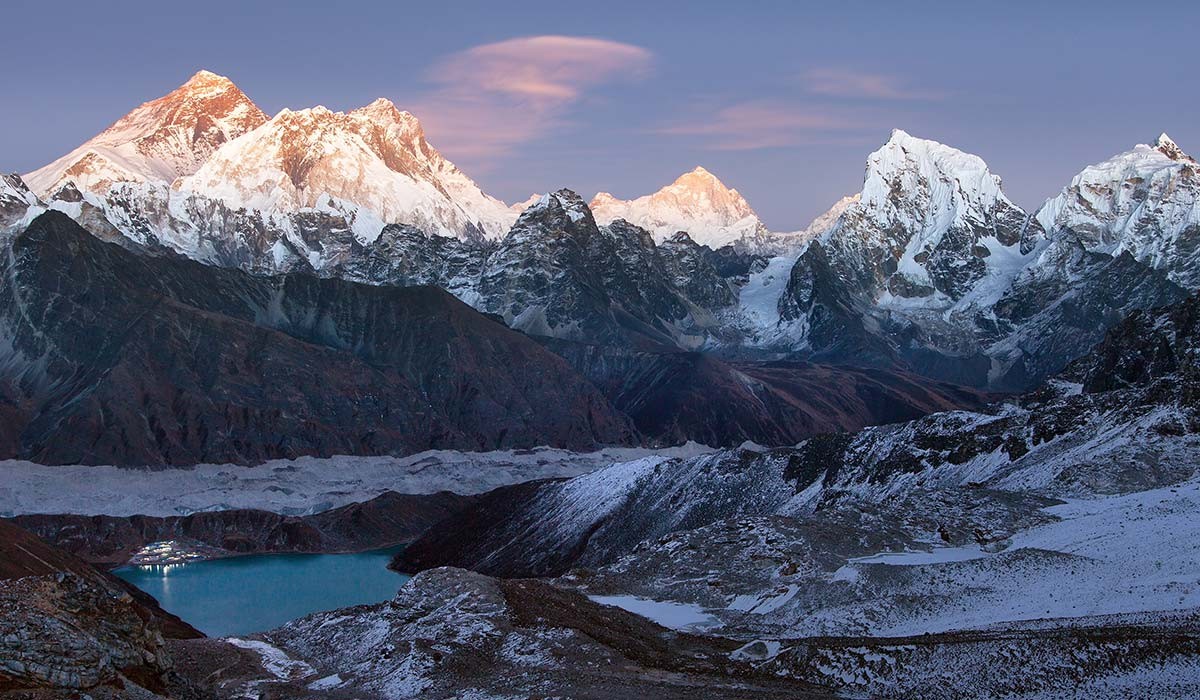
How Difficult is the Everest Three Passes Trek?
The Everest Three High Passes trek difficulty is graded as a strenuous adventure. The reason is that the journey involves climbing to higher altitudes, crossing glaciers and challenging climbs, with basic trekking equipment.
Continue reading to learn about the elements that make the Everest Three High Passes trek strenuous:
High Altitude
During the trek, you will need to cross passes at higher altitudes, all above 5,000m. Therefore, ascending to Kongma La, Chola and Renjo La is not an easy task. Reaching the destinations requires steep ascents and descents.
Also, you will spend a significant number of trekking days above 4,000m. The thin air and low oxygen level at these altitudes will not make the trek easier. You are prone to the risks of high-altitude impacts, including Acute Mountain Sickness.
A proper acclimatization is mandatory, even for experienced trekkers, at such an altitude.
Rugged Terrain
The trails are slippery as you have to walk past snowy terrains. Add to that the rugged landscapes with loose rocks. All these features of the terrain make the walk difficult. The narrow mountain passes demand careful navigation. A slight mistake can turn out to be an expensive affair during the trek. There are chances of being injured if you happen to lose your footing along the rocky slopes, all adding to the difficulty level.
Long Duration
The trek typically takes over two weeks to complete. As such, you will be spending a long duration in the high altitudes. Also, you need to walk long distances every day. To cover the trek distance of 166 km, you will have to walk for around 6-8 hours daily. This will be a challenging affair.
Other Factors
The unpredictable Himalayan weather can add to the difficulty level. There might be snow, high winds, and sudden temperature drops, even during the prime trekking season. The weather can change abruptly, causing difficulties during the trek. Likewise, the remote terrains and lack of resources along the route are the limitations of the Everest Three Passes trek.
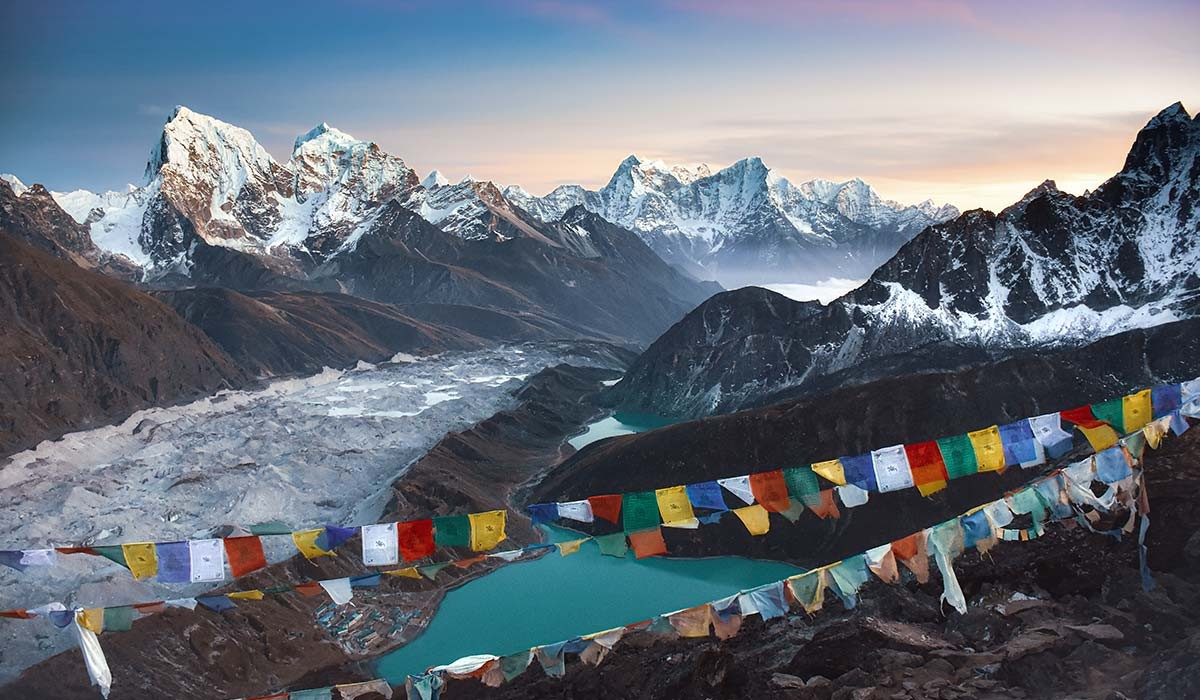
Experience and Fitness Required for the Trek
The Everest Three High Passes trek is not just another trek. It is a serious venture that is filled with challenges. Thus, it demands a good experience and fitness from the trekkers.
If you plan to be a part of the Everest Three High Pass trek, here are a few things that you should know beforehand:
Recommended Experience
This trek is not for inexperienced trekkers. You must possess previous experience of high-altitude trekking. You should have treaded on challenging terrains before opting for this trek. Therefore, it is recommended to complete at least one multi-day trek at a moderate altitude before this.
This is required because you need to have an experience of hiking on rocky and icy trails as well as scree slopes. This is what you will encounter during the Everest Three High Passes trek. And without prior experience, it becomes difficult to navigate such terrain.
Fitness Requirements
An excellent mental and physical fitness is inevitable for this trek. Therefore, train yourself both physically and mentally at least 3-4 months before embarking on this journey.
Physical Fitness: Before you arrive for this trek, prepare yourself physically to attain cardiovascular endurance, leg strength and stamina. For that, you can hike regularly in a hilly or mountainous area. You should carry a loaded backpack to simulate the real trekking conditions and hike.
Likewise, run, cycle and swim 3-4 times a week as a part of cardio training. This helps improve the capacity of your lungs.
Strength training should focus on the legs and core. These factors will improve your overall physical fitness.
Mental Preparation: You should be mentally prepared for this trek to be resilient enough to endure long days, basic conditions and high altitude discomforts.
While regular physical training also improves your mental strength, you should also have a positive mindset to deal with adverse situations. Limit your expectations and learn to understand how to deal with the upcoming challenges. Practice meditation and deep breathing exercises to handle yourself during overwhelming situations.
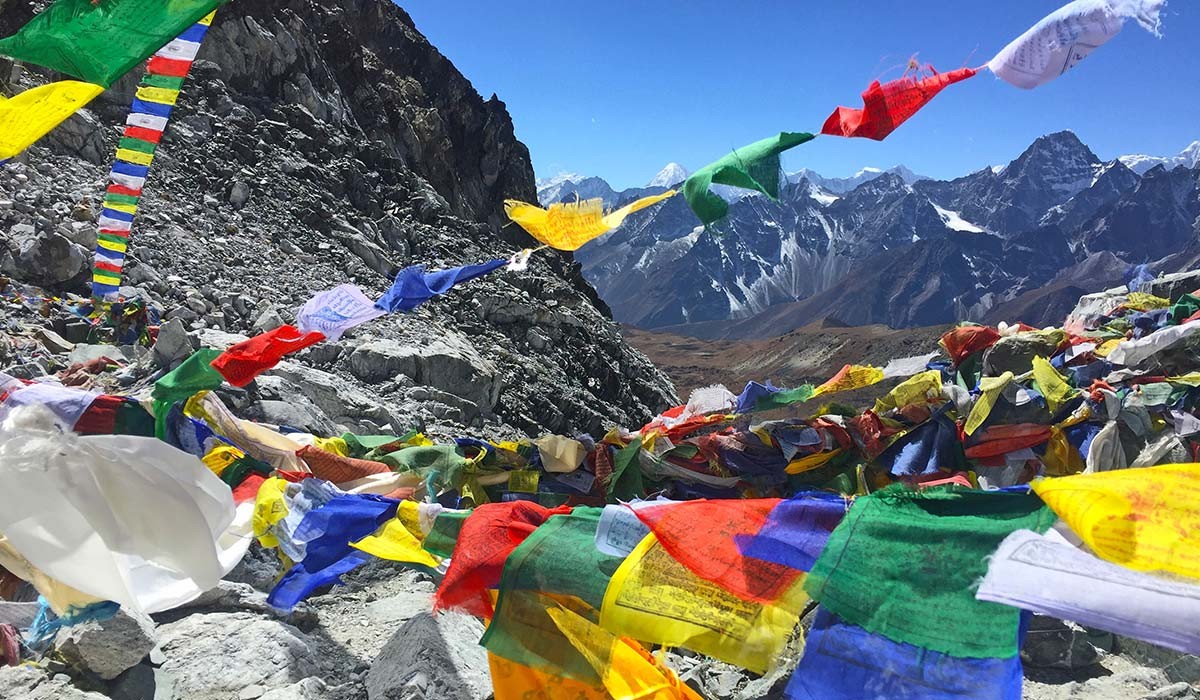
Best Time for Everest Three High Passes Trek
The best time to visit the Everest Three High Passes trek is generally autumn and spring. The seasons bring stable weather conditions and offer the trekkers a rewarding experience on the high passes.
The following section of the article helps you further decide on which time of the year to trek to the Everest Three Passes.
Spring: March to May
If you want to trek to some of the highest altitudes amidst warm daytime temperatures, clear skies and rhododendron blooms, then spring is the right time for you.
The temperatures range between 17°C and 25°C during the day in the Everest region. They drop to -15°C at night. While the warm lodge stay helps you battle the cold weather at night, the daytime temperature allows you to have a comfortable trek.
Also, the daylight hours are longer, which is helpful in crossing the passes. Another perk of opting for the spring trek to the Everest Three Passes is the excellent views of the mountains, possible because of the clear skies.
Nonetheless, with such favorable weather conditions, the trails can be busy during spring. Yet they are not as crowded as autumn.
Autumn: September to November
If you want to be in the Everest region during the most popular season of the year, then the autumn trek is suitable for you. The trails and lodges are busy, especially in October.
Favorable weather conditions are one of the factors behind that. You can expect crisp and stable weather during this time. The visibility is clear. There is minimal precipitation, leading to dry trails.
The spring temperatures in the Everest region are somewhere between 15°C and 20°C during the day. At night, the temperature can drop to -10°C. Overall, the cool daytime temperatures enhance the experiences of the Everest Three Pass trek.
Winter: December to February
It is possible to trek in winter with some precautions, but one should be able to deal with the extreme weather conditions. The mountain conditions are harsh in winter. The winter temperatures are around 0°C to 4°C during the day, and drop up to -15°C at night in the Everest region. As such, whenever there is heavy snow, and it is there in winter, the high passes can remain closed. Likewise, many lodges in the high villages are also closed due ot the extreme weather conditions. It can add to the challenge of the Everest Three High Passes trek.
Summer / Monsoon: June to August
The trails are less crowded in this part of the year in the Everest Three Passes. You will also get to see greenery everywhere. But some challenges come with his season.
Persistent rain and cloud cover, risk of landslides, slippery trails and poor visibility will make your trek a challenging endeavor.
Yet if you can look beyond that, then with proper caution, you can trek during these months too. As per the temperature, it ranges between 20°C and 25°C during the day. It averages around -5°C at night.
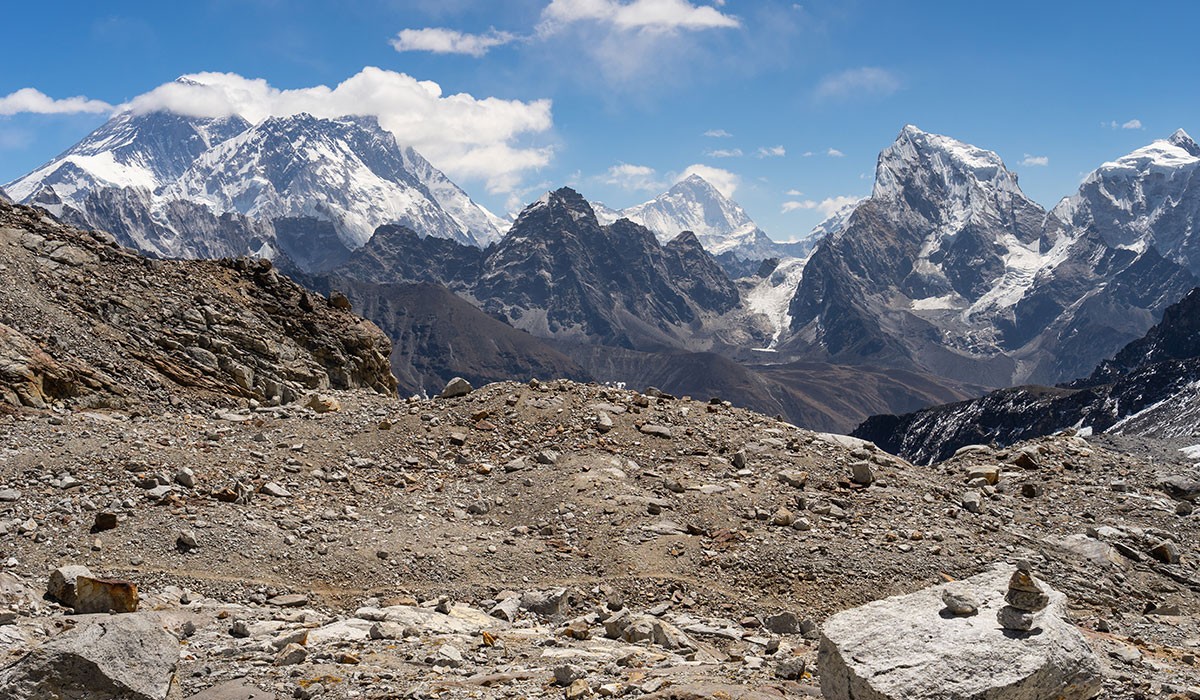
Accommodation and Meal During Everest Three Passes Trek
The route of the Everest Three Passes trek is undoubtedly remote and challenging. Yet you will get to stay in welcoming lodges with basic facilities and warm meals.
Accommodation
You will spend all your nights are locally run lodges if you book the Everest Three High Passes trek with us. These lodges offer twin rooms with basic facilities of wooden beds, mattresses, pillows and blankets.
Shared bathrooms are a regular thing. You might also have to manage with the square-style toilets in some villages. However, Namche Bazaar and Dingboche, among other places offer better lodges with attached bathrooms. You will have to pay an extra fee to get hot showers, provided that they are available in these accommodations.
Along the route, you will be eating in common dining halls. You need to pay extra to charge your electronic devices, despite the availability of electricity in most villages. But as the electricity is unreliable at high altitudes, you should bring along your power bank or solar charger.
You can find WiFi and mobile networks in some places like Namche, Dingboche and Gokyo. The signals might be weak or even non-existent in other places.
Meal
The teahouses and lodges en route provide hot meals that are freshly cooked. You will not get varied options. But the options in the list of simple, nutritious and filling meals comprise breakfast, lunch and dinner.
You can savour Tibetan bread, porridge, muesli, pancakes, eggs, tea, coffee and hot lemon in your breakfast. The lunch is usually made of Dal Bhat along with fried rice, pasta, chowmein and spaghetti. It may also include Sherpa stew, momos and potato dishes. You can expect a similar option for your dinner. Meanwhile, you might need to pay extra for boiled water.
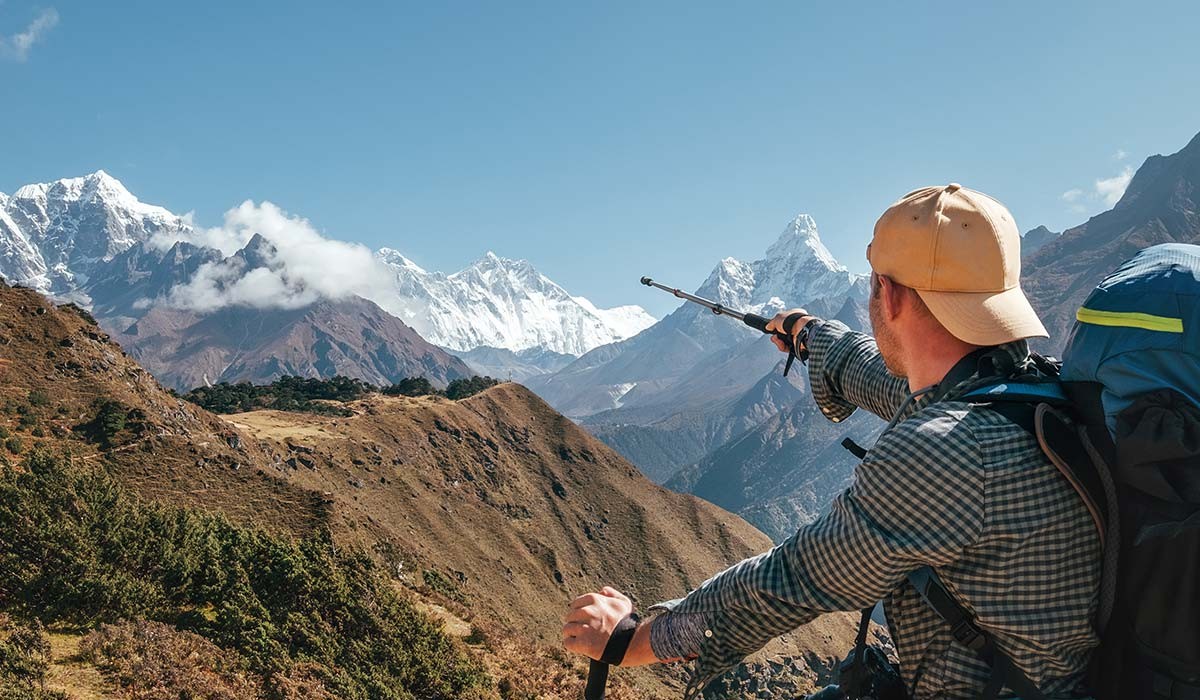
Packing for the Everest Three High Passes Trek
Packing of right clothes and equipment is essential to tackle the Everest Three High Passes trek safely. Before collecting the required items for packing, keep in mind that you should opt for multiple layers of clothes. This helps you deal with the changing weather. Pack as light as possible so that you have a lightweight backpack. Do not forget to ensure you are able to walk in your boots comfortably before leaving home.
With these things in mind, pack the following items:
Essential Clothing
- Moisture-wicking base layers like quick dry t-shirts, thermal tops and bottoms
- Insulation mid layers like a fleece or a lightweight down jacket and a heavy down jacket
- Outer layer like a waterproof jacket and trousers
- Trekking pants, including a pair of warm pants for cold days
- Lightweight liner gloves and insulated waterproof gloves
- Headwear comprising a warm beanie or a wool hat, a sun hat or a cap, and a buff or a neck gaiter
- Footwear comprising sturdy waterproof trekking boots, camp shoes or sandals, trekking socks and warm socks for sleeping
Trekking Equipment
- Two bags that include a 35-45L daypack with raincover and a duffel bag for porters
- Adjustable trekking poles
- 4-season trekking bag and sleeping bag liner
- Sunglasses with UV protection feature
- Reusable water bottles or hydration bladders
- Headlamp with spare batteries
Personal Items and First Aid
- Toothbrush, toothpaste, and biodegradable soap
- Quick-dry towel, wet wipes, hand sanitizer and toilet paper
- Personal medication, blister treatment, painkillers, rehydration salts
- Personal first aid kit
- Sunscreen and lip balm
Electronics and Extras
- Power and connectivity items like a power bank, a universal plug adapter and a solar charger
- Travel insurance details
- Documents like trek permits and copies of your passport
- High energy snacks like nuts, bars and chocolate
- Electrolyte powder
- Dry bags as organizers
Permits and Insurance
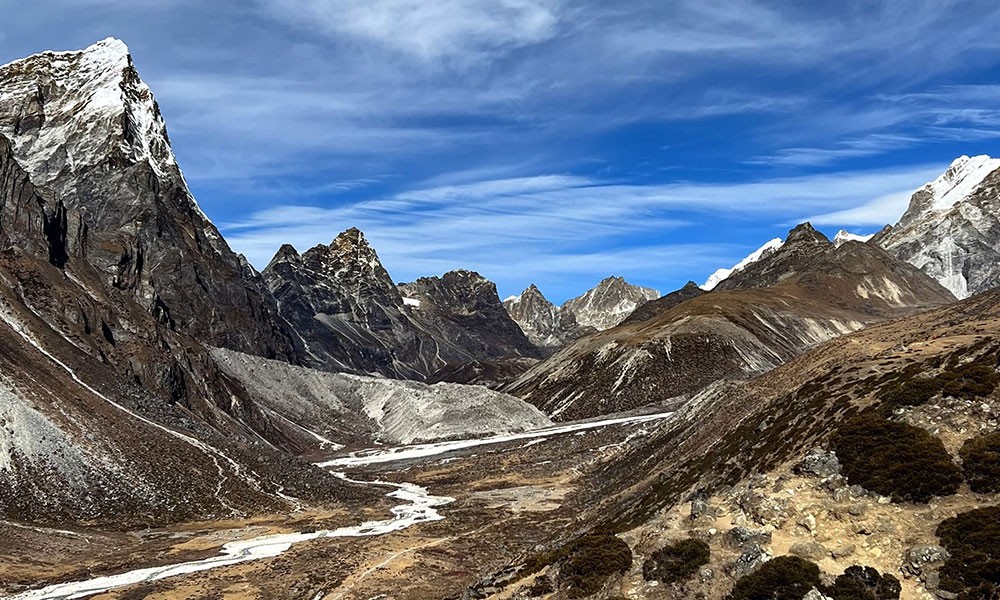
Necessary Trek Permits
To trek the Everest Three High Passes, you should obtain the Sagarmatha National Park Entry Permit. It is required to trek within the national park. Meanwhile, the Khumbu Pasang Lhamu Rural Municipality Permit is needed for all treks in the Everest region. It has replaced the TIMS card. Carry the permits at all times because you will need to show them at different checkpoints.
Travel Insurance
Travel insurance must be secured before trekking to the Everest Three Passes. It should be a comprehensive policy covering emergency medical evacuation. This should cover helicopter evacuation above 5,000m. The policy also must include high-altitude coverage of trekking up to 5,500m, along with accident and medical care expenses.
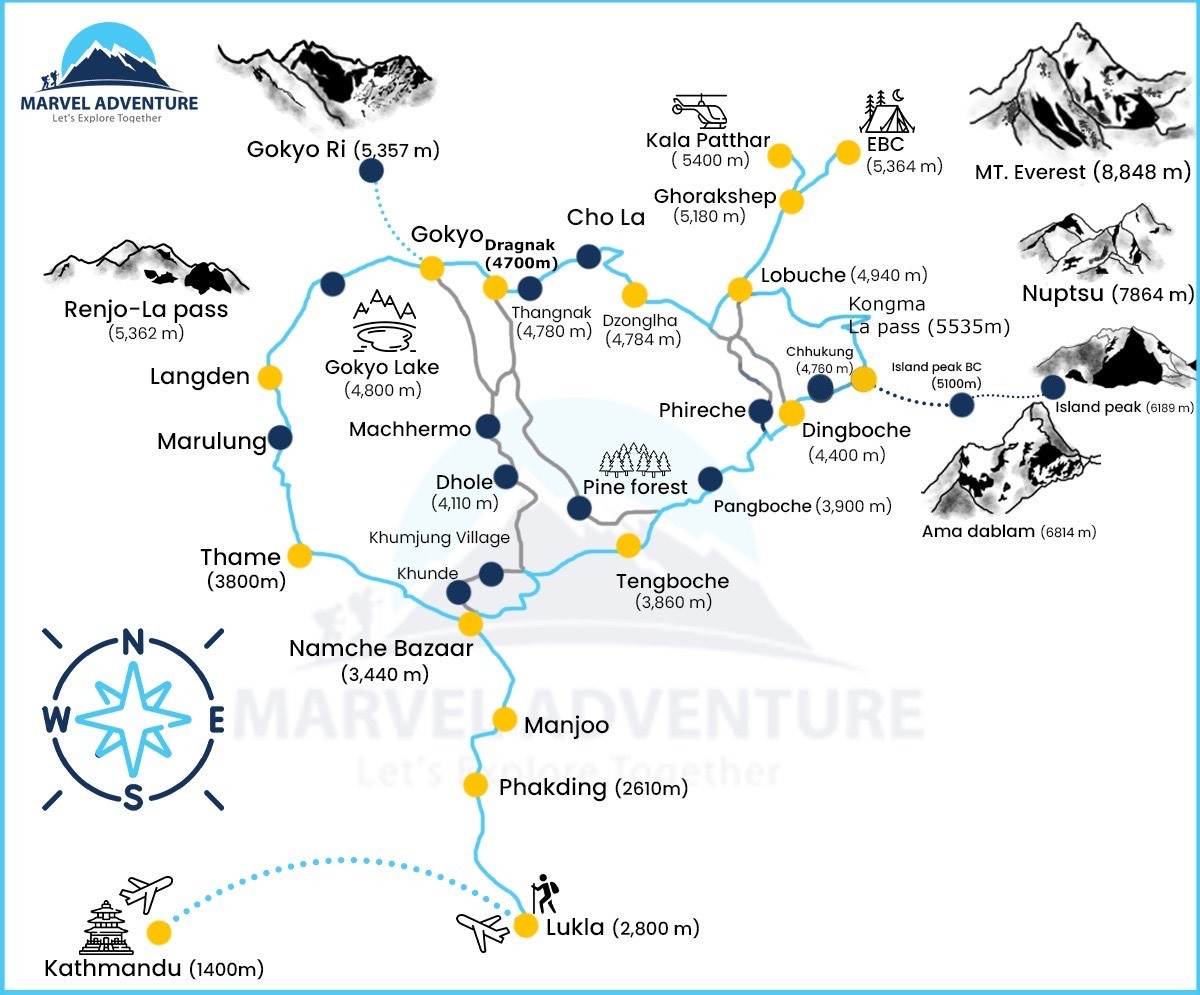
Health and Safety Measures
For a safe Everest Three Passes trek, you need to know the risks associated with it. Only with a proper understanding of the related dangers can you prepare yourself for the challenges.
Here is what you need to know to stay safe for the trek:
Altitude Sickness and Acclimatization
Altitude-related sickness is one of the major health concerns in the Everest Three High Passes trek, as you need to travel over 5,000m many times.
One of such risks is Acute Mountain Sickness (AMS). If you experience symptoms of nausea, headache, dizziness, loss of appetite and fatigue, then you might be suffering from it. You are at risk of developing AMS in high altitudes because your body is unable to adjust quickly to the reduced oxygen level.
Acclimatization is essential to prevent it. And gradual ascent is one of its major rules. Likewise, you need to stay hydrated, avoid drinking alcohol and smoking and eat enough calories. Resting is recommended if symptoms appear. If symptoms worsen, descending to a lower altitude may be necessary. Or emergency evacuations may be needed, depending upon the situation.
Cold-related Illnesses
Due to the below-freezing temperatures at high altitudes, you might suffer from conditions like hypothermia and frostbite, too. Common signs of hypothermia are shivering, confusion, and slurred speech. You need to dress in layers to prevent this situation.
Meanwhile, symptoms of frostbite include numbness and pale skin of fingers, toes or face. Wearing gloves, hats and dry socks will help reduce the risk of frostbite. And change damp clothes immediately to reduce the risk.
Evacuation and Emergency Response
In case of any medical or other emergency situation, a helicopter response is available throughout the Everest region. Your travel insurance policy must cover that aspect for the high-altitude rescue. Other than that, the guides who accompany you during the tour are trained to recognize the symptoms of altitude sickness and other illnesses. They will provide you necessary help along with organizing quick evacuations during the Everest Three High Passes trek.
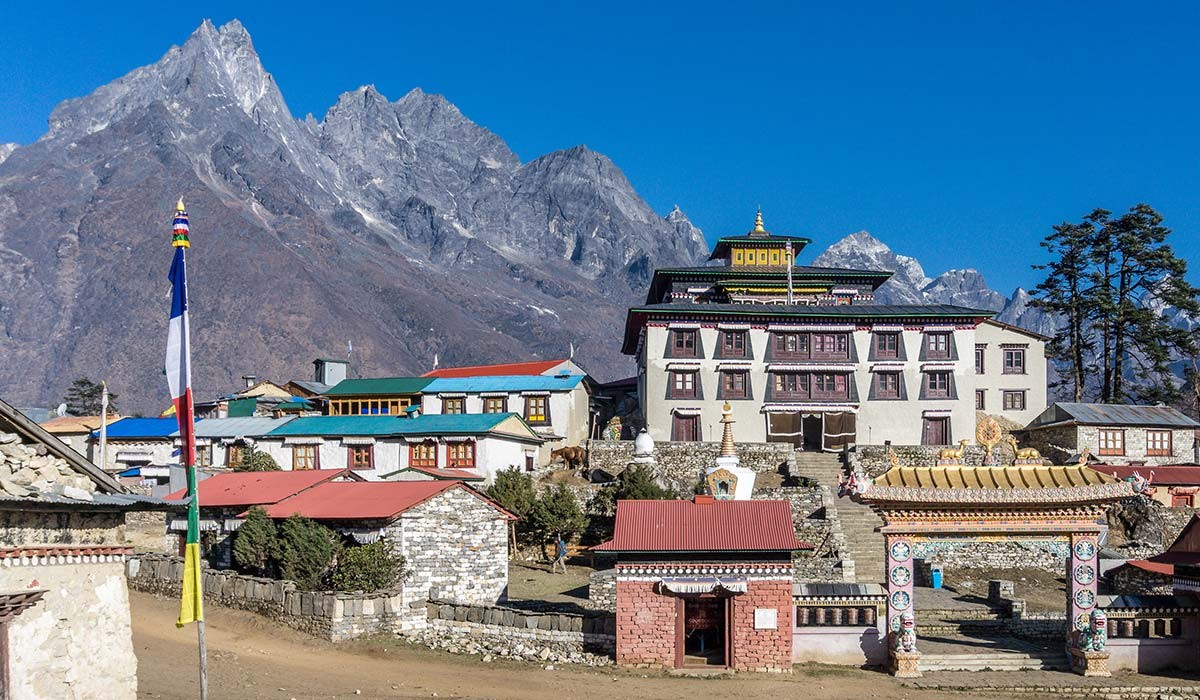
Respect for Culture and Environment
Travelling to the three high passes of the Everest region takes you through the Sherpa settlements, where you get a close view of their cultural aspects. Likewise, the Everest region is home to different flora and fauna along with the pristine mountains. You must trek here responsibly to preserve the environment and honor the local people.
As a way to show your respect for local culture, greet people warmly with a smile. Dress modestly before entering temples or prayer halls. Also, do not forget to remove your shoes in such places of religious importance. Always get consent before taking photos of people.
As you trek, always carry the non-biodegradable waste with you. It is advised to use refillable bottles instead of carrying or buying plastic water bottles. To avoid damaging the fragile alpine flora, stick to the established trails. And support the local communities by buying local products, staying in local teahouses and giving fair tips.
FAQs
Do I cross 3 passes in the Everest Three High Passes Trek?
Yes. This trek requires you to cross three high mountain passes - Kongma La, Cho La and Renjo La.
What is the difficulty grade of this trek?
The Everest Three Passes trek is graded as strenuous. It is physically demanding because you need to climb to a higher altitude, above 5,000m, via rocky paths and steep ascents. The days are long and you need to spend more time at high altitude.
How fit should one be before starting this trek?
You need to train for around 3-4 months before attempting it. The training should be done in a way so that you are able to hike up to 8 hours daily, walk along steep terrain and be able to cope with thin air above 5,000m.
When is the best time for trekking in this region?
The spring and autumn are regarded as the best seasons for the Everest Three High Passes trek. They offer good visibility and stable weather conditions.
What kind of accommodation can I expect?
There are simple mountain lodges with twin beds and basic bedding, shared bathrooms and communal dining rooms.
What can I eat at the lodges and teahouses?
Most of them serve a warm breakfast of porridge, eggs and bread. And they offer Dal Bhat for lunch and dinner. You will also get pasta, potatoes, momo, soup and hot drinks like tea and coffee.
Do I need to obtain any special permit to do this trek?
Sagarmatha National Park Entry Permit and Khumbu Pasang Lhamu Rural Municipality Permit are required. But they are usually arranged by your trekking company.
Is it possible to trek without a guide and a porter?
Most people hire a licensed guide as well as a porter for safety and support.
Can I trek without travel insurance?
No. Travel insurance is a must for the Everest Three High Passes trek. Your insurance policy should cover emergency helicopter evacuation, medical care and high-altitude trekking.
How do I stay connected?
Mobile coverage is available in some places, and WiFi is offered at many lodges. And to use the phone or other devices, you need to charge them. The facility is available at most teahouses after paying a certain fee.
